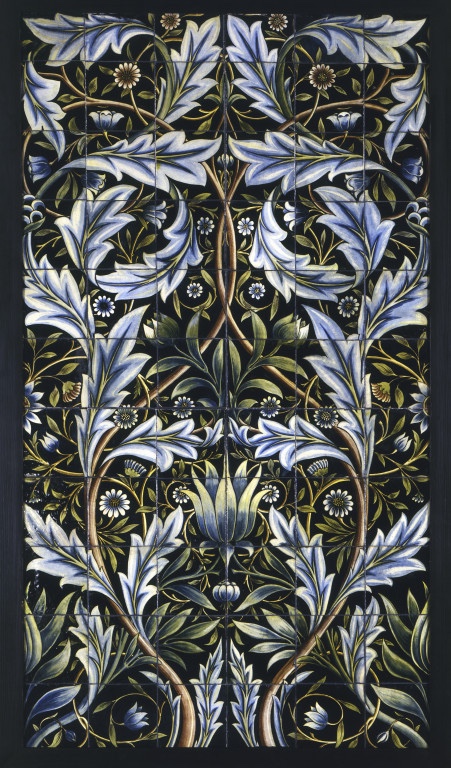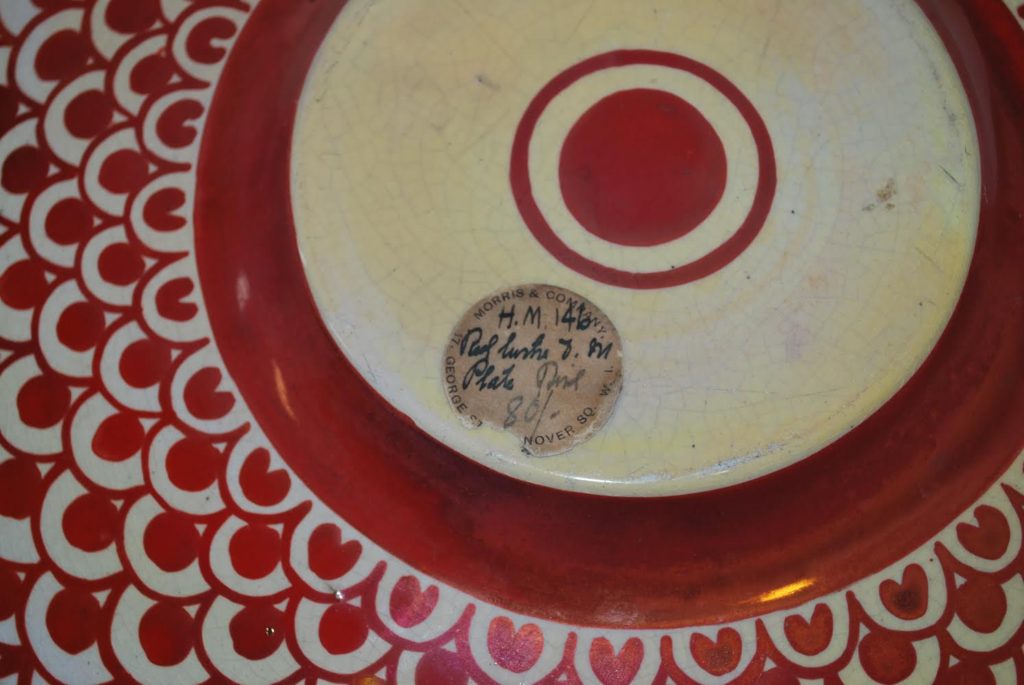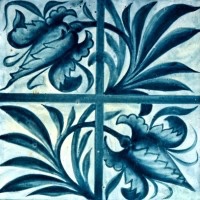‘Mr. Morris was always coming round to get ideas from Mr. De Morgan, and would carry off his finest work. Mr. De Morgan just would let him take it and never bothered. We used to hide fine pots sometimes, as we didn’t like them going.’
This fantastic anecdote is from the account of Mr. Bale, one of De Morgan’s workmen, who was actually recommended to him by William Morris. This is one of the many cultural exchanges these two leading figures of the Arts and Crafts movement had – William Morris and William De Morgan were known to be close friends as well as artistic collaborators (even though they sadly never even had a photograph taken together). They designed tiles together and produced complementary designs for Arts and Crafts interiors, furniture and decoration.
In fact, William Morris is often accredited as main influence on William De Morgan’s beginnings as a designer. In 1863, William De Morgan met William Morris at his studio at Red Lion Square, having been introduced to him by fellow artist Henry Holiday. Perhaps it was Morris’ incredible enthusiasm for the decorative arts, or De Morgan’s disillusionment with the easel, that De Morgan started to pursue his career as a designer instead.

William Morris Gallery, Walthamstow
Starting with stained glass and furniture (potentially at Morris’ suggestion) De Morgan started to experiment with different subjects, including various classical and floral subjects. Their relationship developed leading to William De Morgan designing for ‘The Firm’ (Morris, Marshall, Faulkner & Co.) and a new transfer of ideas across media occurred as De Morgan began to work on tiles.
Many of De Morgan’s early designs show a strong Morris influence, both in motif and pattern-making. In 1872, De Morgan established his own tile works in Chelsea. De Morgan’s tiles were sold through The Firm until is dissolved in 1875 and then through its successor, Morris & Co., formed the same year. The most famous of the tiles produced during this collaborative period are the large Membland Hall panels in 1877. This really reflects how the art scene was dynamic and fluid within the Arts and Crafts Movement.

http://m.vam.ac.uk/collections/item/O8046/tile-panel-morris-william/
They maintained a long friendship, and in 1882, William De Morgan moved his business to be closer to Morris’ established factory in Merton, near Wimbledon. At the peak of this period, De Morgan & Co. led around 40 employees to man the kilns, paint ceramics and throw pots, all overseen by William De Morgan. Morris and De Morgan’s friendship was testament to an exploration into the processes of creative collaboration and cross-fertilisation.
De Morgan ceramics were always available for sale through Morris & Co., both in the showroom and in catalogues sent to wealthy clientele, again demonstrating the shared aesthetic ambition of the artists to create beautiful, handmade objects.

This Morris design was produced by both firms although this example was probably made in De Morgan’s workshop. It’s called Tulip and Trellis.

Sources:
Jon Catleugh, William De Morgan: Tiles, (Somerset, 1991).
Wilhelmina Stirling, William De Morgan and his wife, (London, 1992).
Further research:
Early De Morgan/Morris ceramic collaborations in the prints and drawings and ceramics collections: http://collections.vam.ac.uk/item/O11149/tile-morris-william/
Before ceramics, De Morgan made some panels for William Morris furniture: https://www.wmgallery.org.uk/collection/artists-64/de-morgan-william-1839-1917/initial/d/page/1/object/music-cabinet-g25-c-1870-80
By Kirsten van Graan, De Morgan Volunteer





